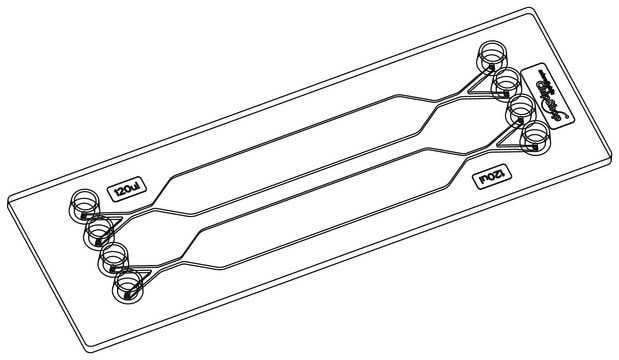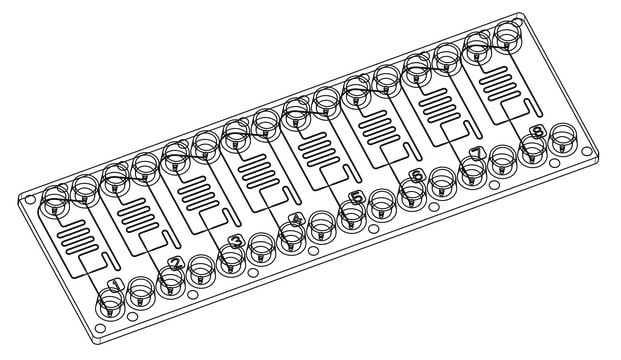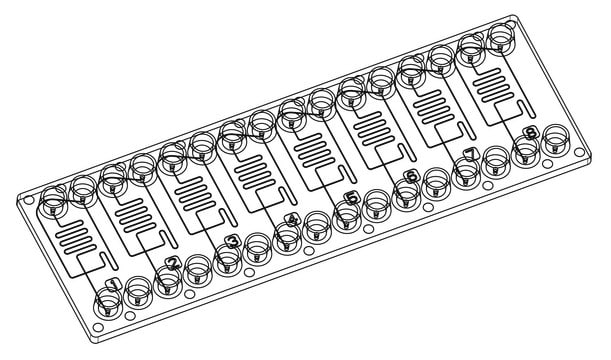The nanoparticle production rate can vary but would generally be in the milligrams per hour range, depending greatly on the experimental conditions. For instance, a 100 nm liposome contains approximately 80,047 lipids, and depending on the material type, the total number of particles per milliliter can be calculated.
推薦產品
描述
Microfludic hardware kit component for synthesizing nanoparticles
Kit components :
- Microfluidic chip x 1
品質等級
應用
advanced drug delivery
尋找類似的產品? 前往 產品比較指南
一般說明
NanoFabTx™ microfluidic chip, for 100-200 nm particles is a component of our NanoFabTx™ microfluidic - nano, device kit for synthesis of 100-200 nm nanoparticles and liposomes (911593). The kit additionally includes a protocol, supporting manifold, tubing, and additional accessories for microfluidic-based synthesis.
應用
NanoFabTx™ microfluidic chips precisely control and manipulate fluids on the microscale. Their well-controlled geometries enable facile syntheses of monodisperse polymeric nanoparticles. NanoFabTx™ microfluidic chip, for 100-200 nm particles can be used as a replacement for the component in our NanoFabTx™ microfluidic - nano, device kit for synthesis of 100-200 nm nanoparticles and liposomes (911593).
法律資訊
NANOFABTX is a trademark of Sigma-Aldrich Co. LLC
相關產品
產品號碼
描述
訂價
Andrew Gdowski et al.
Journal of nanobiotechnology, 16(1), 12-12 (2018-02-13)
The process of optimization and fabrication of nanoparticle synthesis for preclinical studies can be challenging and time consuming. Traditional small scale laboratory synthesis techniques suffer from batch to batch variability. Additionally, the parameters used in the original formulation must be
Samar Damiati et al.
Genes, 9(2) (2018-02-22)
Microfluidic devices present unique advantages for the development of efficient drug carrier particles, cell-free protein synthesis systems, and rapid techniques for direct drug screening. Compared to bulk methods, by efficiently controlling the geometries of the fabricated chip and the flow
Xuanyu Li et al.
Advanced drug delivery reviews, 128, 101-114 (2017-12-27)
Microfluidic chips allow the rapid production of a library of nanoparticles (NPs) with distinct properties by changing the precursors and the flow rates, significantly decreasing the time for screening optimal formulation as carriers for drug delivery compared to conventional methods.
-
What is the approximate nanoparticle production rate per hour for microfluidic devices used in the production of both liposomes and polymersomes?
1 answer-
Helpful?
-
Active Filters
我們的科學家團隊在所有研究領域都有豐富的經驗,包括生命科學、材料科學、化學合成、色譜、分析等.
聯絡技術服務





